|
Note: The names of companies are provided for information purposes only and are not recommendations. We warn you now, this is a very long blog, but it contains a huge amount of useful information.  Author Robert Cubitt at Newark Book Festival Author Robert Cubitt at Newark Book Festival One of our authors, Robert Cubitt, has attended several book fairs as a seller this year and learnt quite a few tricks about selling books direct to the public. This blog acts as a “case study” for anyone else who is considering taking this route to sell some of their books. I’m sorry that this blog only relates to UK events, but most of what we talk about can be applied in any country in the world, so it still makes it a worthwhile read. But first of all, a reality check. Book fairs and similar events aren’t going to turn you into a best selling author. All the exhibitors that Bob spoke to while attending these events had the same stories to tell regarding sales volumes.. You may sell a few books and people may search out your books on-line later, but don’t load up a van with hundreds of copies hoping to go home with an empty van because it isn’t going to happen.  But book fairs aren’t just about selling books direct to the public. They are a shop window. Not everyone who looks in a shop widow buys what they see straight away. Sometimes they go home, think about it for a bit and then come back and buy. Obviously, by that time the book fair is over, but there are ways of accommodating that which we will discuss later. Firstly, it is essential to do some research on the fairs you want to attend before you reserve your place. There is usually a contact email address to which you can address questions, but finding out who else has been to them in the past and what experiences they had is also helpful. Not all book fairs are the same. One of the ones Bob attended was aimed mainly at the second-hand book market and it’s pretty hard to sell your book at a profitable price when the stalls around you are selling all their stock at a fraction of what you are charging. It was noticeable from the behaviour of the people attending that they were interested only in bargains. The fair wasn’t an entirely wasted journey, but Bob barely covered his costs.  Some book fairs have speakers or people reading extracts of their work. You could even offer to speak yourself. It almost guarantees sales (but make sure to take someone with you to look after your stall while you are speaking. You don’t want to miss any sales). The next thing to consider is the cost for the “pitch”. Costs range from about £5 at smaller fairs up to £40 or £50 ($35-$45) at the larger ones. For one event, which ran over a weekend, Bob also had to have a hotel room which cost a further £100, plus meals. Including fuel, you can call it a £200 investment for the weekend and you won’t be far out. There were a few other costs, and a we’ll be discussing some of them.  Given what we said about the potential to make sales, it is therefore advisable to work out how many books you would have to sell to recoup your costs, to see if it is worthwhile going. Obviously, the closer you are to the venue, the more profitable it is likely to be. However, a lot of the value in bookfairs isn’t in actual sales. It is part of a marketing strategy and has to be treated with that in mind. You may not sell a single book on the day, but it could result in several sales after the event. It isn’t unusual to see people photographing the book covers and they aren’t doing that because they’re into photography. Bob actually asked someone why they were doing it. and they said it was because they were compiling a list of books they were interested in so they could compare and contrast them later, before buying on-line.  The next cost is that of the “author copies” of books, because you can’t sell product and promise to post it later! Of course, all of that expense is tax deductible, but has to be paid out in the first place in order to reclaim it later. So, was it worth that investment? Yes for 3 events, no for one (the one focused on secondhand books). Oxford was a particularly profitable one, with good reasons why. It is advertised as an “Indie” book fair, which means that customers know what to expect. Bob didn’t realise how many people actually search out Indie authors until he saw hundreds of them coming through the doors for that fair.  So, what did Bob learn from these events? The greatest thing about them was the opportunity to meet and interact with readers. These people are the life’s blood of authors, and we need to understand them. The best way to do that is to talk to them and book fairs provide an excellent opportunity to do that. While the main purpose of being at the book fair was to sell books, this opportunity to meet readers shouldn’t be underrated.  Booking a place at a book fair isn’t always easy. There isn’t a universal directory that lists them all (business opportunity?). Some book fairs leave it quite late to decide what dates to hold their events. It also isn’t easy to find out about the smaller fairs. The search results are dominated by the big, international events, which aren’t suitable for most Indie authors. Even if you could get a stall, the cost would be prohibitive. So, finding the smaller fairs is a bit of a challenge. We’ve provided some links to help you out, at the end of the blog. (sorry if you aren’t in the UK. You’ll have to do your own research).  The value of networking at bookfairs is important when it comes to finding out about other book fairs, but we’ll talk more about that later in the blog. Most (probably all) book fairs provide a table on which to set out your stall, but for outdoor fairs in the summer (and some at Christmas), you may need to check whether you need to provide your own shelter from the weather. Two were outdoor events and provided covered market stalls, which met Bob’s needs. But you should definitely plan to take something to sit on. Folding camping chairs or garden chairs are ideal. Once at the fair, there are many other things you have to consider, but they divide mainly into “selling your book” and “other things to think about”.  Social Media Turn your social media connections into customers by advertising your presence at the book fair through your social media posts. Bob posted the day before the event took place and again on the day of the event itself. By using the “schedule” facility that most social media channels have, the details can be posted even while you are driving to the event. If the event has a website, post a link to it. The organisers will appreciate it and it will help people to find out more information. Also link to the organisers’ social media accounts where appropriate. Bob also posts after the event to thank people for turning up.  Selling Your Book Make sure you have enough stock. There is no point in exciting interest in your work, only to have to tell the buyer that you’ve sold out. Exactly how many copies of a book you need will depend on the size of the book fair. If it’s big one, like Newark, then 50 books in total is probably enough. For a small event in a village hall, as few as 20 copies may be adequate. What you don’t sell at one book fair will give you a head start for the next one. If you write series, have at least the first and second books in the series available. If it’s a trilogy then having all three titles available is OK, but if it is a longer series there is no point in having later titles, because people are unlikely to commit that much money to an untried series. But make sure that buyers have some way of finding your books when they are ready to buy the next book in the series (see more below). 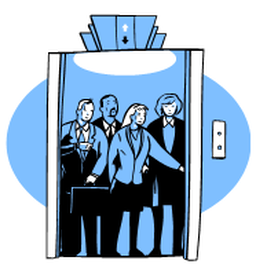 The next thing is to have all your “elevator pitches” prepared, one for each book you have on sale. While some of the people browsing the stall will pick up the book and read the back cover blurb, many of them just pick it up and ask “What’s this book about?” At that point it doesn’t do to be umming and ahing. You have to be ready to tell them about the book in as concise a way as possible. If you aren’t sure what an elevator pitch is, or how to compose one, Google one of the many blogs on the subject. Here’s one we found, but there are many others. https://www.wordstream.com/blog/ws/2022/08/16/elevator-pitch-examples-templates You should have elevator pitches ready anyway, even if you don’t plan to attend any book fairs, because people will ask about your books if they know you are an author. One of our authors once sold a book at a wedding she was attending, based solely on her elevator pitch. 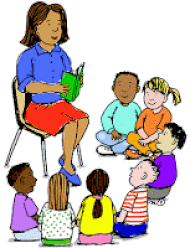 Which brings us to stories. Not the story that is told in the book, that has already been covered above. No, I mean the story of how the book came to be written. Readers love those stories and once they’ve heard them it is far more likely that they will buy the book (but there is no guarantee). Bob has a very good story about how he came to write the biography of his father’s war service. That story has sold him more copies of the book at book fairs than any of his other titles. Then he tells the customers about how that biography inspired his Carter’s Commandos fiction series, and that sells copies of those books. Next you have to be able to deal with all the usual annoying “Would I like this?” sorts of questions that authors always get. And you have to be able to respond without sounding sarcastic. The best way our author found of responding was to reply with a question of his own, such as “What sort of books do you usually read?” 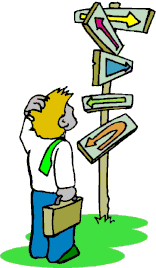 Be prepared to grasp at any straw to connect their reply to your book. It doesn’t matter how far removed from your genre their preferences may seem, making a connection of some sort could lead to making a sale. But don’t be afraid of directing people to other stalls, where they may find what they are looking for. Some people just don't have an interest in your genre (whatever it is). I’ll talk more about that later in the blog. People love a bargain, so being able to discount the price of your books compared to bookshops and on-line retailers is a big plus. Bob charged about £1.50 ($1.35) below the Amazon list price and was still able to make the same level of royalties as he does on-line. His printed price list shows his price and the Amazon price side-by-side, so people know they are getting a discount (they can also check for themselves). Bob also offers further discounts if people buy more than one book. Know what royalties you expect for each book, how much the books cost you to buy (don’t forget the delivery charges) and price accordingly.  One of Bob's props - his father's medals. One of Bob's props - his father's medals. Take “props” with you because they attract attention and encourage questions. Bob displayed the original cover art for his father’s biography and his father’s medals but on other stalls he saw artefacts that relate to fantasy, sci-fi and horror genres. There are internet retailers that sell that sort of stuff, so making a small investment is often worthwhile. If nothing else they are conversation starters and conversations sell books. Other things to think about. Display is a critical part of attracting attention to your books. Not only must the browsing public be able to see the cover, but they should also be able to see the blurb. Bob uses upright stands (available online) to display the book’s cover and lays a copy out flat in front of it showing the back cover blurb. Some sellers print fliers that show the same information, but Bob noticed that fliers often fly away when the wind blows. Books don’t do that. Some sellers also use boxes or small bookshelf units to raise the height of the books. Maybe this is something that you will want to play around with at home to see what works best for your books, when placed alongside other promotional materials such as props. Getting stuff up to peoples’ eye level often helps with sales. Take some freebies and giveaways with you. Bob takes some bookmarks that a colleague made for him. These are handed out to people regardless of whether or not they buy a book. 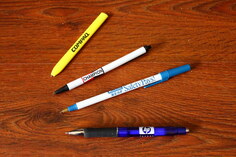 Cheap pens with the title of your book, your name or your website details printed on them are another good giveaway. They can be bought for as little as 20p (about 16c) each, but you have to buy in bulk. Make sure you have plenty of business cards to place on the stall. Even if you don’t sell a book, the browsing public will take something away with them and they may check out your titles later. And slip a business card inside each book, to be found later. This is especially important if you write series. If you don’t have any business cards, they can be purchased on-line from companies such as Vistaprint. You should always carry business cards anyway, because everyone you meet is a potential customer - they just don't know it until you tell them about your book. Another useful marketing tool is to have small bags into which to put purchased books, with a book title, author name or perhaps a cover image on the outside. In these environmentally conscious times, make sure the bags are made of paper, not plastic. Branded bags are expensive, so buy cheap plain brown paper ones then buy a separate roll of stick on labels with your message printed on them and apply one to the other before you go. Bob bought his bags on Amazon and his labels from Stickythings Limited and the total cost was another £50 ($40).  Bob also bought a tablecloth with our Selfishgenie branding on it (see photo above - we paid some of the cost as it is part of our marketing). It wasn’t cheap, but the cost can be recouped over several book fairs. Take plenty of small change with you. You don’t want to lose a sale because you haven’t got change for a £20 note. Make sure you have a way of accepting credit cards, debit cards, Applepay etc. There is no point in losing a sale because you only take cash. There are a number of companies that provide Bluetooth connected card readers these days and their charges are quite reasonable if you are going to attend a lot of book fairs or “meet the author” events. Bob Cubitt uses Sumup. There is also a long list of sundry items that you might need to have with you. Bob has a checklist he uses before he leaves home, just to make sure he has everything. You can download a copy (yes, it’s free) at the end of blog.  One of the big opportunities offered by book fairs is networking with other authors. They know things that you don’t, and you know things they don’t. Find out about the sorts of books they sell and if that turns out to be the genre your browsing members of the public read, don’t be shy about pointing them in the direction where they can find the right sort of books. And make sure that the authors on other stands know about your books, if they haven’t stopped by to find out for themselves. Ask them about other book fairs they’ve been to and note down the details. Also discuss writers’ groups, both in real life and virtual ones. Other authors are your allies, not your rivals. So, that was our quick whizz around the world of book fairs and other book selling events. If you have any questions, feel free to ask them in the comments section or you can email us at the address on our “Contacts” page. if you have enjoyed this blog, or found it useful, be sure not to miss future editions. Just sign up to our newsletter to be kept up to date. We'll even give you a free ebook if you do. Here’s a few websites for Indies who live in the UK (and one for Indies who live elsewhere). http://smallpublishersfair.co.uk/book-fair-calendar/ https://www.casita.com/blog/uk-book-fairs-you-should-check-out https://www.oxfordindiebookfair.co.uk/ https://10times.com/publishers-fair https://fromesmallpublishersfair.co.uk/ https://www.newarkbookfestival.org.uk/ Multiple nations: https://publishersarchive.com/2023-book-events.html Children’s books: https://www.theschoolrun.com/best-childrens-literary-festivals-uk Black History Month: https://curlytreats.co.uk/2023-uk-black-history-month-events/black-british-book-fair/ For people in the North West of England (or who can get there easily), try this Facebook page. This Facebook page deals in book signing events, which are just another form of book fair. And the download of Bob's book fair checklist:
0 Comments
Traction and momentum are things that marketers talk about in terms of their campaigns. It relates to the amount of effort that needs to be put in to get results from a marketing campaign and how, once traction has been gained, momentum can be achieved. In terms of money spent, this usually means a lot of it is at the beginning of the campaign, but once traction has been achieved, a lot less has to be spent to maintain momentum. 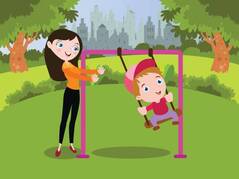 Let me use an analogy. If you put your child on a swing (assuming you have a child – if you haven’t, you’re a writer, use your imagination) and do nothing, then the swing will just hang there and the child will get no enjoyment from being on the swing. So, you need to apply some effort to get the swing moving so that the child can enjoy the experience. Depending on the size of the child and your own strength, you may have to put in quite a lot of effort to get the swing moving. However, once the swing is moving, all you have to do is step in from time to time to give it another shove to keep it moving. That is what it is like marketing a book. 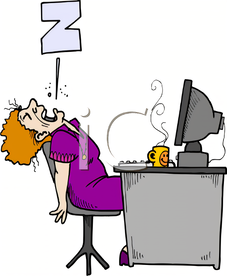 Newton's 1st Law of Motion - an object at rest will remain at rest. Newton's 1st Law of Motion - an object at rest will remain at rest. If you just upload your book to your distribution platform (I’ll use KDP and Amazon for the sake of ease) then it’s like putting the child on the swing. Nothing will happen unless you make it happen. Yes, Newton’s first law of motion applies even to book marketing – an object at rest will remain at rest. So, once your book has been published, you have to provide the outside force that acts on it to take it from a state of rest to a state of motion and get sales moving. If you are an unknown author publishing your first book, you will have to put in a lot of effort. If you are an established author with a loyal readership, you won’t have to do quite so much – but you still can’t do nothing. Even loyal readers need to know that you have a new book out. But the amount of effort you put in will eventually pay off. You will make sales. The sales will put your book higher up the sales ranks, so Amazon will help you by steering readers towards your book because that will make Amazon more money, and your readers will help you by leaving reviews of your book.  But you can’t back off entirely. Once your new readers have bought your book, they aren’t going to buy it again. This means that your book will start to slide down the sales rankings, the automated systems will pay it less attention and you won’t make so many sales. So, you have to step in and give your swing another push, just to get things moving again. Social media marketing has a part to play in this, but it is never going to provide you with the big push you need to get up the sales rankings. It will sell you the occasional copy, which is the equivalent of the swing just about moving back and forward. Let’s face it, that wouldn’t be very exciting for your child and, in terms of books sales, it isn’t going to be very exciting for you. So, you need to find some way to give the book a bigger push. 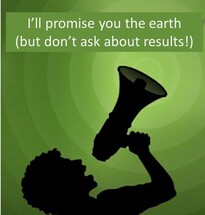 On the internet there is no shortage of people willing to make you lavish promises of results in exchange for your hard earned money. Some people do find success with those book promoters, but I think that it’s true to say that the majority don’t or, at least, they don't get the level of success they had hoped for and which will return a decent profit. Most of the internet companies are using social media to promote their customers’ books and are just doing what you could do for yourself, but on a larger scale, eg more Tweets (are they X’s now?), more Facebook posts, more Instagram posts etc. Again, they may get you a few sales, but they aren’t going to get you to the heights that will get you excited. But there is one tried and tested method to stimulate books sales and we have blogged a lot about it over recent weeks. Amazon Ads do produce results. 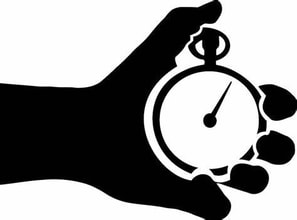 The problem with Amazon Ads, however, is that they take time to work. It seems to take an eternity to build traction and get your sales moving. Many Indie authors place an ad for a week or a fortnight, find the results disappointing and halt the ad. Instead, they look for the on-line book promoters who promise instant results, then get very disappointed when they find that they are spending larger sums of money but getting very indifferent outcomes. So, why does it take so long for Amazon Ads produce results? 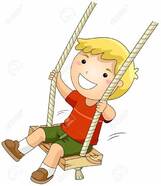 I’ll return to my child on a swing analogy, but this time imagine you are on the one on the swing, with no one to push you. By moving your body the right way, you can get some motion, because you are putting energy in and that energy has to go somewhere. But you need to keep putting in energy to get you moving faster and higher. If you stop putting in energy, the swing will slow down and stop. To start with, you have buyer resistance. Advertisers maintain that an advertising message has to be seen 7 times before some buyers respond to it. This is why you will see the same ads on TV several times in a night and several more times over successive nights. The marketers are trying to get those 7 viewings in quickly, so the ad starts to pay back through increased sales. 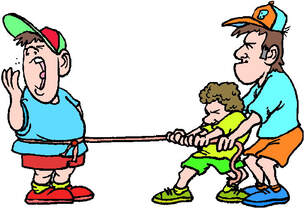 Think about that for moment. Let’s say that Mr X, a reader, goes on Amazon to find a new book. He does a search for the sorts of books he likes to read, and he is presented with a list of results. If you have paid for an advert, then your book will be one of the ones he sees. It’s called an impression and you don’t have to pay for it. However, Mr X has never heard of you, so he scrolls down to the next result, which may be a book by an author he has heard of. He buys their book instead of yours. But Mr X has a limited amount of free time, so it takes him about a week to read the book before he goes back to Amazon to buy his next one. He sees your ad again, but again he scrolls by, looking for a more familiar name. This happens maybe four or five times over the space of four or five weeks, but Mr X then realises that he does know your name now, because it has become familiar through repeated impressions, so this time he might click on your ad. Now, if you pulled your ad after week 2, you could never get that click from Mr X at week 6 or 7.  The ad system analyses Mr X's clicks. The ad system analyses Mr X's clicks. So, this is the first time you have had to pay, and it is also the first time that Mr X is seriously considering buying your book. He may buy it this time, or he may not. A lot will depend on the blurb for the book and the sample he may read. But he will remember your name now, so every time he sees your ad, you have a chance of him buying the book. But, because Mr X has clicked on the ad for your book, the ad system now knows that he might be the sort of reader who will be interested in your book. So, the system analyses the ad clicks that Mr X has made in the past, looks to see who else has clicked on the same books and shows your ad to them, even though they may not have used the same search words as Mr X. You can see this system in action on Amazon, because they show you “People who viewed this item also viewed ….” And “People who bought item this also bought…”  Someone taking a risk on your book. Someone taking a risk on your book. This means more people are now going to see your ad and every time one of them clicks on it, the ad system learns a little bit more and directs your ad to more new people. More new potential readers means more potential clicks and more potential sales. But you still need that first sale, because if your book is low down the sales rankings, it discourages some readers. So, you need to find a reader who is prepared to take a chance on your book without looking at the sales rankings. And they do exist. We know they do exist, because that’s how our authors all sold the first copy of their book. We paid for the advertising, of course, but someone took a chance on them. And someone, somewhere, will take a chance on you – but only if they see the ad for your book often enough. The same applies to reviews. Some people will only buy books if they have reviews, so you need some of those to be posted, which needs sales too (please do not pay for reviews. Amazon is able to spot them and will remove them, so you will only be wasting your money.) So, the graphic below illustrates the process by which ad clicks get turned into sales, which creates traction and leads to more sales, which creates momentum. But, as I said above, the system needs a shove from time to time to keep things moving, so you will need to keep advertising, if only at periodic intervals. You can tell by your sales figures when that should be. If you were making 5 sales a day consistently and that starts to drop to 4, then 3 then 2 etc, it’s probably times to liven things up again with another ad campaign.  Blog Reader: “But it takes so long, and I have to spend so much money.” Yes, but if you are using the system correctly you will get that money back when you gain traction. If you put nothing in, you get nothing out. Remember Newton – an object at rest will remain at rest unless an outside force is applied. You have to be the outside force! And at least you know where your money is going and you are in control, unlike with those on-line marketing companies that promise so much but deliver so little. 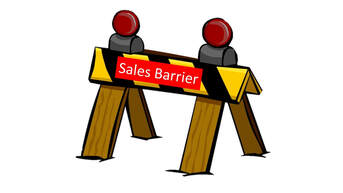 It took you weeks, months, maybe even years to write your book. It can hardly come as a surprise that it could take weeks or even months to get some sales, gain traction and build momentum. And, if you haven’t made any sales after say, 3 months, then it might be worth considering why that may be. Because advertising can only sell a book that the reader wants to read, so if they don’t want to read your book, there has to be a reason and you know the fault can’t be in the advertising, so it has to be in the product. If you have enjoyed this blog, or found it informative, then make sure you don’t miss future editions. Just click on the button below to sign up for our newsletter. We’ll even send you a free ebook for doing so. 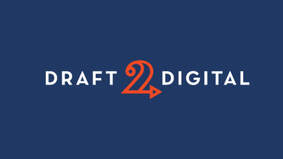 For those of you that have come here looking for a blog about Universal Book Links, aka UBLs, fear not. We’ll get to those in a moment. But first, we want to revisit a blog we posted in April 2023, about distributing some of our books through Draft2Digital (aka D2D). At that time, we said that we had sold a few books on that site without doing any marketing for them. People seemed to have found their way there by themselves, probably via the companion site to D2D which is Books2Read (aka B2R). We said then that we would let you know how things were going once we had some more data, which is why we are blogging about it now. 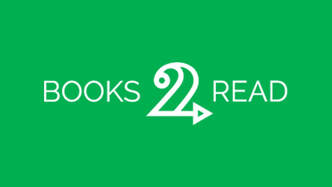 To save you having to read the blog again, we’ll just give you a little bit of background to explain why we decided to use D2D as well as Amazon. Basically, while we were selling a few copies of some books in ebook and paperback formats, they weren’t being downloaded on KindleUnlimited. (KU). Putting books on KU requires the author to make them exclusive to Amazon, so they can’t be sold through any other on-line retailer. So, we thought, if they aren’t being downloaded on KU, why are we keeping these books exclusive to Amazon? We may be missing out on sales through other sites. We uploaded the books to D2D which then distributed them through several other on-line retailers. I won’t list them all. Visit the D2D website for the full list.  And it seems to have worked well for us. We have sold more copies of the books through D2D in 4 months than we had in the previous year through Amazon. It told us something, though we weren’t sure what until we did some digging into the sales reports. Most of our sales, historically, have been to the UK. That isn’t surprising considering most of our authors are British and they write mainly for the British market. We do get the odd sale through Amazon to the USA, India, Australia and a couple of other countries but when we looked at our D2D sales data it was noticeable that we were getting a far greater geographic distribution. Almost none of our new sales were to the UK and our overseas sales were far more widely spread, taking in the European Union, the United Arab Emirates (UAE) and New Zeeland.. None of our titles have been translated, by the way. All of these new sales are in English.  It was also noticeable that a lot of the sales were in paperback format, costing far more on D2D than they do on Amazon. The question we had to ask was “Why”? 1. Why were we reaching countries we had never sold to before and 2. Why were we selling so many expensive paperbacks? The conclusion we had to draw was that it was because we were using Universal Book Links (UBLs). See - I told you we would get there eventually. 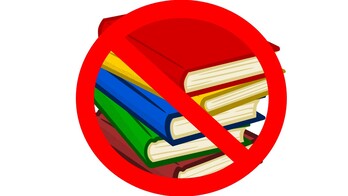 A UBL takes the reader (a) to the retail site they prefer to buy from and (b) the retailer’s site which deals with the country in which they live. When it comes to paperback sales, this is very important. Some retailers who sell paperbacks either don’t print them in some countries or they don’t deliver books to some countries. So, our UBLs were taking buyers to the sites where they could buy paperbacks and get them delivered to their country. They also had the price displayed in the appropriate currency for their country, or one they were familiar using. That is a strong psychological factor for some people. If someone usually pays in $, ¥ or €, seeing the price displayed in £ can be off putting. When you upload a book to D2D it creates a UBL for it automatically if you also subscribe to B2R (it’s free), which you can then copy and paste into all your marketing materials, which we did. 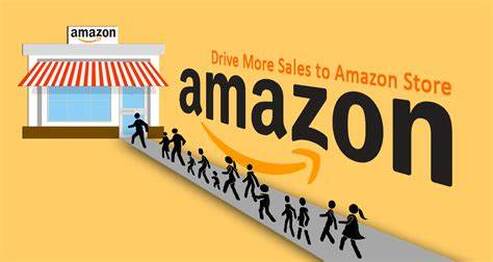 OK, if you click on a link to Amazon and it doesn’t take you to your local Amazon site, they will offer to redirect you to your local site but that, also, is too much hassle for some readers. So, if getting better global distribution sells more books, how could we exploit that for the books that are still exclusive to Amazon? After all, we want to sell through all the Amazon sites across the world and we want to make the process as hassle free as possible for buyers. Well, it turns out that those nice people at B2R will also allow us to create UBLs for books that are sold on Amazon but not on D2D. How cools is that?  So, using this link, we sat one of our team down in front of a PC and set her to work creating the UBLs (look in the top RH corner for the UBL maker) for all the books we sell exclusively through Amazon. It took about 30 seconds for each book title, but we kept her well refreshed with coffee and donuts while she did it. A couple of warnings. Firstly, if you use URL shorteners, such as bitly or tinyurl, they can’t be converted into UBLs. You have to copy the book’s URL direct from its Amazon sales page. You also need to use the link to the Kindle edition of the book, not the paperback. If there is a paperback version, the UBL will link to it, but the link creator doesn’t like links to paperbacks if you paste them into it.  The other things is that the system does seem to be a bit flaky and doesn’t always work first time. Our colleague kept getting a warning that the Amazon link she had pasted wasn’t recognised as a link to an ebook, even though it was. She found that if she kept clicking on the “Got it” button in the warning pop-up, the link was eventually created. A couple of times she had to re-paste the Amazon URL to get it to work, but a little bit of perseverance and patience got the job done. So, having done all that work, has it increased our overseas sales?  Well, it appears that it has. We now use UBLs in all our marketing and they seem to be delivering for us. So, our main takeaways from this week’s blog: 1. Using D2D can increase your sales, because you reach a wider book buying market. 2. UBLs help you increase sales across the world. 3. You can create UBLs which will take Amazon users to their local Amazon website, wherever they are in the world. If you want to do some experimentation, it may be worth your while, but do remember to unsubscribe your book from KindleUnlimted before you upload it to D2D, or Amazon will get a bit touchy about it. If you have enjoyed this blog, or found it informative, then make sure you don’t miss future editions. Just click on the button below to sign up for our newsletter. We’ll even send you a free ebook for doing so.  Finding the right keywords to include in an Amazon Ad can be a very time consuming activity. Gurus like Bryan Cohen, of Best Page Forward, recommend using 100 - 150 keywords in an ad, and also recommend creating 5 to 10 ads a week. So, that mean finding anywhere between 500 and 1,500 keywords A WEEK! That’s a lot of keywords and it could take a lot of time researching them all. If it takes 1 minutes to research one keyword, that could be as much as 2½ hours to generate enough keywords for a single ad. For 5 ads that could be 12½ hours a week. Who wants to spend that much time on a single marketing activity? Not us, that’s for sure. 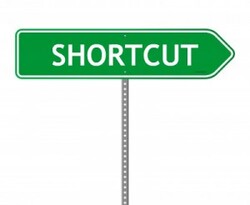 So, we love it when we find a short-cut that will save us some time. To give you some idea of how long it took us to find 150 keywords and create an ad with them, the total was 25 minutes (if you exclude making cups of coffee and answering the telephone). It took us longer to write the first draft of this blog about it! I think most of us can squeeze 25 minutes out of our busy schedules if it means getting an increase in sales for our books. So, how is this magic worked? I’m going to take you through it step by step. The first few steps you may not need to do at all, or you may need to do them only once. The later steps are the ones you have to do every time to generate a list of 100-150 keywords.  If you have any questions after reading this and trying it out, ask them in the comments section and I’ll get back to you as soon as I can. There are 36 steps to this procedure, which seems like a lot, but some of them describe just one mouse click or screen tap. Once you are familiar with it, the whole process takes a very short time, so don’t be put off by that number. You may want to do a “split screen” on this, so that you can read the instructions from the blog and then try them out as we go along. Or you may prefer to print this blog and follow the instructions that way. OK, let’s go! 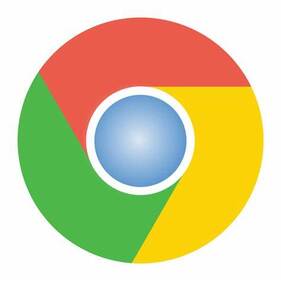 1. If you don’t already have the Google Chrome browser installed on your PC or laptop, download and instal it. 2. Once you have Chrome installed, open it and instal “Kindletrends Also Bought downloader” It is free. It will instal into Chrome automatically, so you don’t have to do anything (you can also instal the extension into other browsers, but we don’t have a full list which is why we specify using Chrome). 3. Open Chrome and look at the top right hand corner of of the page and you will see 3 vertical dots. Click on those to access the Chrome settings menu. 4. Click on “Extensions” and then “Manage extensions”. 5. Locate the “Also Bought” downloader extension and click on “Details”. 6. Locate the line that says “Allow in incognito” and switch it on if it isn’t already switched on, then exit back to the Chrome home screen. That is the end of the steps that you will only have to do once. Now for the steps you have to do every time.  7. At the top right hand corner of Chrome, find the 3 vertical dots again and click on them. 8. Click on “New incognito window”. The reason you use incognito browsing is so that Amazon doesn’t identify you from your IP address and start to offer you the sort of books that you normally read. You want to find the sort of books that you write, which may be different. Now you are going to identify books like the ones you write. You may have some of these by other authors on your own bookshelves, which is a good place to start. If you haven’t, then you are going to have to take a more “trial and error” approach. We use Publisher Rocket to help us identify books and authors in the categories in which we are advertising, but if you don’t have that, don’t worry. I’ll assume you don’t have any relevant books to hand, and you don’t have Publisher Rocket. 9. In your incognito browser, go to the Amazon website for the country in which you wish to advertise. For example, you may live in UK but want to advertise in the USA, so you need to go to Amazon.com. Conversely you may be the USA but want to advertise in the UK, in which case you need to be on Amazon.co.uk. The site you choose will affect the results of your search, which you are going to do next. 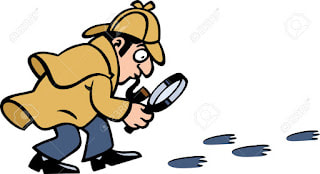 Some authors have international popularity, but many don’t. There is no point in including keywords relating to an author who is popular in the USA but no one on the UK has ever heard of, and vice versa. 10. In Amazon’s search bar, type in a search term for the sort of books you write. For example, you could type in “historical romance” if that is what your write. But you may want to narrow that search down a bit by adding tropes from your book, such as “enemies to lovers” or “pirates” or whatever tropes you have used in your book. You can also search using an ASIN, a book title or the name of an author if they are in a category relevant to your book.. 11. From the search results, choose a book that you think is similar to yours and click through to its sales page. Make sure you are viewing the version you are going to be advertising, eg ebook, hardback or paperback.. 12. Read the blurb to check that it is like yours. You may even want to read a bit of what used to be called the “Look Inside” but now is just referred to as a sample. 13. If you are happy that the book is one that you might find on the same shelf as yours in a bookstore, go to step 14. If not, go back to step 11 and repeat. "You will see a whole jumble of data that doesn’t make much sense." 14. Now scroll down the page until you get to the carousels that are named either “What did customers buy after viewing this item?” or “Customers who viewed this item also viewed” (the words may vary a little depending on which country you live in). The former is the best but isn’t always displayed, so you may use the latter, but you can also use both if you wish. You will get some duplication in your results, but there is a simple step to remove them later. 15. Next to the text described in step 14, you will see a little icon that looks like a blue fairy cake with a red candle. This is the icon for the “Also Bought” plug-in. Click on this. The books displayed will start to scroll across the screen, which indicates that their details are being downloaded. When the scrolling stops, the download has finished. This could take up to a minute, depending on how many books there are in the carousel. 16. You may repeat steps 11 to 15 to gather more keywords, or you can go straight to step 17 and return later if you think you need more keywords. 17. Open “file manager”, locate the downloads folder and open it. 18. Open Excel (or whatever spreadsheet app you use) and open a new spreadsheet. 19. In the downloads folder, you will see the list of downloads that you created at step 15. There will be a .png version and a .txt version. The .png is an image of the book covers. You don’t need to use that. Double click on the .txt version to open it. You will see a whole jumble of data that doesn’t make much sense. DON’T PANIC! 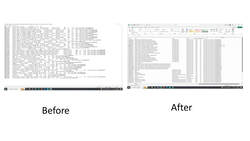 20. In the text reader, go to “edit” and then “select all” to highlight the text, then copy it. 21. Paste it into the spreadsheet. It should now be nice and neatly displayed in columns, starting with the ASIN (Amazon’s catalogue number) on the left, then the title, series name, author name and then the other stuff. You can delete all the stuff to the right of the author’s name if you wish. 22. Repeat steps 17-21 for each of the .txt files you downloaded. 23. I don’t use ASINs in my keyword searches, but if you wish to you can. Everything I say from here on applies to them as well as to the other columns. 24. In an ordinary browser, Open “Keyword Cleaner”. This is a free webpage which will help you to clean up your keyword list (don’t forget to add it to your “favourites”, because you will use it a lot). 25. Copy the contents of one of the columns of your keywords from the spreadsheet. I always start with “title” and you will see why at step 34. 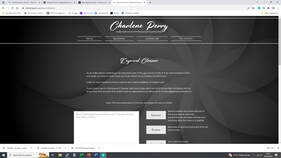 26. Paste that into the big box on Keyword Cleaner. 27. There are 6 buttons to the right of the big box and you will use at least 5 of them. 28. Click on the button marked “Separate”. This will remove any subtitles or series names that have been included with the title, providing they have been separated from the title by a semi-colon, colon, hyphen or brackets. They will re-appear in smaller boxes further down the page. 29. Click on the button marked “Format”. This will remove most of the special characters that Amazon Ads doesn’t like, if there are any in the list. 30. You can click on the box marked “Sort A-Z” but I don’t usually bother. Amazon Ads sorts keywords alphabetically after they have been entered anyway. 31. Click on “De-duplicate” This removes any duplicated entries. 32. Click on “Copy”. 33. Open a “Word” document (or similar) and paste the list of keywords into the document. 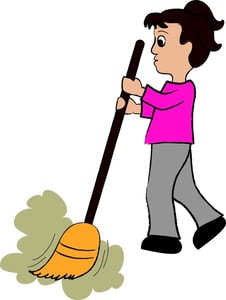 It may be necessary to clean up the list. It may be necessary to clean up the list. 34. Keyword Cleaner isn’t smart, so it can’t always recognise subtitles and series titles and remove them, so it may be necessary to “clean-up” the list a little bit more at this point. This means removing anything from the title that shouldn’t be there. For example, if we got the result “Ten Years To Doomsday a gripping intergalactic action-packed science fiction novel”, everything after “Doomsday” should be removed because it isn’t part of the title. Similarly in the result “Battle Cruiser Elite A Military Sci-Fi Space Opera Adventure”, everything after “Elite” would be removed. 35. Use the 6th button, “Clear”, to make Keyword Cleaner ready for the next lot of data you are going to paste in. 36. Repeat steps 24 to 35 to do the same for the columns marked “ASIN”, “Series” and “Author” in your spreadsheet. They shouldn't need any additional cleaning. At the end of the process, you will have a list of keywords that is duplicate free and ready to be copied into Amazon Ads.  You may want to check how many keywords you have and the quickest way to do that is to highlight the list, go to the “Review” menu on Word, click on “Word Count” and that will tell you how many lines of text you have, which is also the number of keywords in the list. If you haven’t got enough, go back to step 10 and repeat from there. And that is that. Once you’ve done it a couple of times you will be generating keyword lists in 25 minutes or less each time. If you have enjoyed this blog, or found it informative, then make sure you don’t miss future editions. Just click on the button below to sign up for our newsletter. We’ll even send you a free ebook for doing so. Disclaimer: Selfishgenie Publishing has not received any payment or incentives from Best Page Forward or any of its affiliates for any of the content in this blog.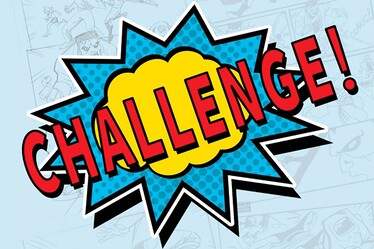 This week’s blog is something of a revisit to earlier blog posts. The reason we’re revisiting it is because it has been so influential in increasing our sales over recent months that we are certain that it can do the same for you. The 5 Day Author Ad Challenge is a free programme of videos and Facebook interactions that can help authors to increase their sales. Let’s deal with the elephant in the room first. You don’t need to spend money to benefit from this challenge.  To get the best out of the challenge it is necessary to spend some money on advertising, but if you don’t have any money to spare, then the challenge does include some ideas for things you can do for free, to make sure your books show up in Amazon’s search results. Saving up some money so you can take part in future challenges could, in our opinion, be the best investment you ever make in yourself and your writing. But the challenge isn’t just about Amazon searches. If you use other platforms, such a Draft2Digital, you can improve the chances of your book being found if anyone enters the right keywords into any search engine. People who don’t have a Kindle often search Amazon for ideas for new books, then go elsewhere to buy them. So, making it easier for people to find your books on Amazon can help regardless of where you publish them. 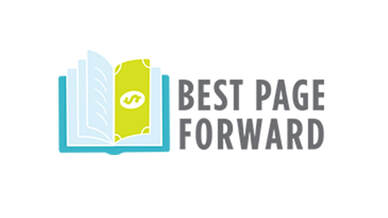 So, the first thing you have to do is sign up for the challenge, and I’ll provide a link for that at the end of the blog (don’t skip ahead! Oh, you already have). They are run every three months or so. They are provided by a guy called Bryan Cohen who runs a business called Best Page Forward, which provides training for authors on a range of book marketing skills. The challenge is a “loss leader”, designed to entice you into buying one or more of their training packages or other services. They also publish books related to book marketing and, if you can spare a few pounds (or Dollars, Yen, Euros, Bitcoin or whatever) we would suggest you buy them if you don’t want to do the challenge – or even if you do. We’ve posted links to our reviews of the books at the end of the blog too. The principle behind the challenge is that using Amazon Ads to sell books WILL always result in increased sales of your book, but by using the techniques and guidelines described during the challenge it will also make your ads more profitable. Profit is defined as royalties minus advertising costs, NOT sales income minus advertising costs. 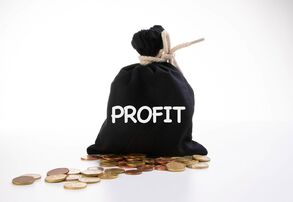 Here at Selfishgenie we are running a business and we aim to make a profit, so if we are able to make this pay then so can you. And we are making it pay. Now, to start with we aren’t talking about making telephone number sized incomes. If you spend £5 (or $, €, ¥ or whatever) it may return you £10. But if you then start to scale that up, £50 could make you £100, £500 could make you £1,000 and so on. So, you are able to start small to find out if it works for you. It will, so you can then start to invest some of your profits into more advertising and so scale it up over time. Bryan boasts of authors he has coached who are now on 6 digit earnings because of this challenge. We can’t verify that, but we can tell you that it has worked for us, and we are earning more profits from our ads than we ever have before, even if it isn’t a 6 digit profit. We have to be careful that we don’t infringe Bryan’s copyright in this blog, so we have to limit what we say to what is open access stuff that you can find on a number of websites. Because of that the best we can do is provide you with a taster. 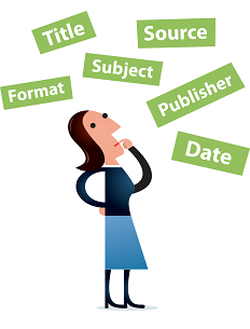 Bryan starts off by talking about the metadata for your book. This is the stuff that you enter on the very first tab of KDP when you self-publish your book. It includes the title, author name and more. Getting the metadata right is crucial to your book being found by search tools, whether it is using Amazon, Google or any other search engine. Getting the metadata right is the stuff that the challenge covers that is entirely free for you to implement. If you get nothing else from the challenge, you will have given yourself a better chance of your books being found. Next Bryan goes through using the different types of ad that are available on Amazon. Amazon Ads provide their own tutorial videos for that, but it is important to recognise that the aims of Amazon and the aims of the challenge are different. Amazon teaches you to use Amazon so that you can spend money on advertising and make THEM a profit. The aim of the challenge is to teach you to use Amazon Ads more efficiently so that YOU can make a profit. The Amazon tutorials teach you to do things in a way that is best for Amazon, not for you. However, the tutorials are good for helping you to find your way around the ads system and we would recommend watching them.  There are basically 4 types of ad, but only 3 of those are available outside of the USA. If you live outside the USA and want to advertise to American readers you can use that 4th type on Amazon.com. The easiest type of ad to use is the “automated ad”. This has simple settings and draws on the keywords in your metadata to identify readers to whom it will show your book (which is one of the reasons why metadata is so crucial). We have used this type of ad in the past and it does sell books, but it isn’t as targeted as the other two types of ad. That means that you have to get more ad clicks in order to sell books, which reduces profits, because you pay for each click. 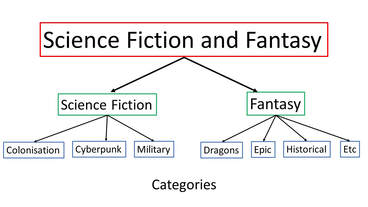 The second type of ad is the “category ad”. This is based on the categories you select when you set up your metadata on KDP. If you have selected “Romance>historical” then anyone who searches for that type of book will see your ad. They will also see that type of ad if they have ever bought that type of book. (We still see ads for Lego on our Amazon homepage because we once bought our grandson some Lego). Now, there are authors who like to call themselves “No 1 bestselling” and the way they do this without lying is to put their book into an obscure category that only requires one or two sales to get to the number 1 position in that category. For example, if an author puts their book in Kindle Store > Books > Home & Garden > Animal Care & Pets > Fish & Aquariums they can reach the number 1 spot with only 1 sale. KDP doesn’t read the book, so it will accept the entry even if the book is an historical romance. The author then gets their Mum to buy a copy and, hey presto, they are a No1 bestselling author. However, their vanity means that is the only book they will ever sell, because people who want to read historical romance will never see their book if they do a search for their favourite genre. The book will only be seen by people who are searching for books about keeping fish - and they are unlikely to buy it. So having your book in the right category is vital for sales and it is something that the challenge spends some time talking about. Vanity will be far better served by selling more books than by calling yourself a No 1 best-selling author. 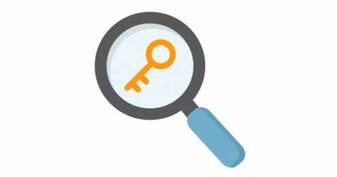 The 3rd type of ad is the manually targeted keyword ad. This requires the author to generate between 100 and 150 keywords which might be used to search Amazon. By including those keywords in your ad your book will be seen by anyone who uses those words to do a search for their next book. A lot of those keywords are either the title of a book, its subtitle, the series title or the author’s name. That’s because if readers have enjoyed a book, they will use one of those things to find their next read. Some even enter the ASIN for the book they read, which is Amazon’s product identification number for it. Generating keywords is time consuming, so the challenge talks about using some public access (ie free) browser plug-ins and websites to help speed up the process. 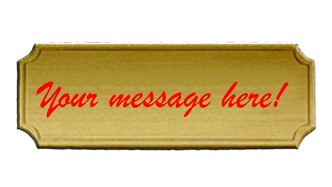 The final type of ad, which is only available for ads on Amazon.com, is the “custom ad”. This uses up to 150 characters of customised text as the “hook” to get people to click on the ad link. Again, the challenge talks about what makes a good hook, so you aren’t working totally blind. That type of ad can be used in conjunction with either categories or keywords to improve results. One of the things that the challenge points out is that if you set a budget, Amazon often doesn’t spend it all. So, if you set a daily budget of £5 ($5) which is the level recommended by the challenge, it doesn’t mean you will spend £5 x 30 = £150 a month. Our experience backs that up, because we only spend a fraction of the budget we set each month. But if your ads are profitable, the actual budget you set doesn’t matter anyway, because you will always come out on top. If you have never done this before, then saving up £150 so you can give it a try is very worthwhile. And you have time to do that before the January challenge. The next challenge is actually October, but you may not have had time to save up before then, but if you are someone who has a bit of spare cash, then we would recommend doing the challenge sooner rather than later. After all, why wait until January to find out how to sell more books?  There is a word of warning we must give, however: patience isn’t just a virtue, it is an essential. Results aren’t instantaneous. It can take 2 or 3 days just to get the first click on an ad, and it may need 10 or 20 clicks to make your first sale. But the system learns from those clicks and gets better at sending ads to the right people, so sales increase and the number of clicks needed to make a sale goes down. By “sale” we include KindleUnlimited downloads. A good result is 6-8 clicks per sale. We are getting a sale for every 4.8 clicks for one of our ads, which is excellent. As you can guess, we are very happy to recommend the challenge to you, our readers. Remember, it is free to undertake, and you don’t actually have to spend money on Amazon Ads if you don’t want to. But we think you will gain far more than you spend if you do. You can find out how to register for the next 5 Day Challenge by going onto the challenge's Facebook Page and following it. It is closed for posts and comments right now, but will re-open nearer the time. I would suggest checking it from about mid-September onwards. For our review of “Self Publishing With Amazon Ads” click here. (you will need to scroll down to find it) For our review of “Fiction Blurbs, The Best Page Forward Way” click here (again, you will need to scroll down). If you have enjoyed this blog, or found it informative, then make sure you don’t miss future editions. Just click on the button below to sign up for our newsletter. We’ll even send you a free ebook for doing so. 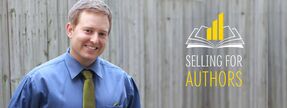 Bryan Cohen of "Selling For Authors". Bryan Cohen of "Selling For Authors". I watched a very interesting webinar recently, about using keywords to improve sales on Amazon (and other retailing websites). I can’t provide a link to it, because it expired on 2nd July, but it was created by Bryan Cohen, owner of the Selling For Authors website. Bryan provides training for authors who need help marketing their books and he has also published a number of books on the subject, some of which have been reviewed on this blog page. We’re big fans of Bryan because he has helped us to increase our sales. So, with the webinar no longer being available, we thought we would tell you about some of the things we learnt from it.  Basically, the webinar was about “Search Engine Optimisation”, aka SEO. But rather than being about using SEO techniques to help people find your website (you may not even have one), it is about helping readers to find your books on whichever websites you sell them. Although I will be talking almost exclusively about KDP and Amazon, the same techniques can be used for whichever websites you use to publish and sell your books. The secret is keywords. Those are the seven words you are able to input into the metadata for your book when you upload it onto KDP. 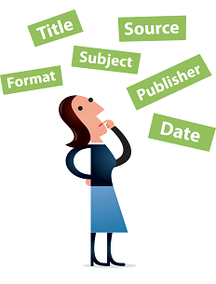 Metadata, if you are unfamiliar with the term, is the stuff you enter in the first part of the KDP process: Book title, author name, blurb, etc. That is all copied across to other versions of the book, such as paperbacks and some of it also appears on the Amazon sales page. But from the point of view of this blog, I’ll be talking about keywords and subtitles which are a very important part of the metadata.. Now, I’ve already said KDP allows you to enter 7 key words for your book. That is misleading, because you can actually enter whole phrases. If you enter 7 phrases of five words each, that’s 35 words you actually use. The critical thing is, the closer you can match those phrases to the ones people use when they search for books on-line, the higher your book will appear in the search results. 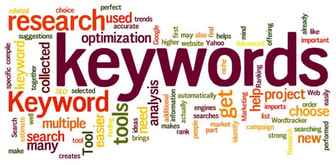 If you use a generic term in your keywords, such as Sci-fi, then it generates thousands of results, and your book will be hidden away in amongst all the others. But if you get an exact match on a longer phrase, the only books that will appear higher in the results are those which have been “sponsored” (paid for adverts) and other books with keywords that are an exact match for the same search term. A book that hasn’t sold a copy since Adam was a lad can appear on the first page of the search results if the right keywords have been used. And experience shows that a book that appears on the first page of search results has a far higher chance of being purchased than one that appears on the subsequent pages. Bryan advises us that there is a process for finding the right keyword phrases to use. Trying to short-cut that process is likely to give disappointing results, so you are advised to set some time aside for this activity. 2 to 3 hours should be enough for a single book.  If you can’t spare 3 hours out of your busy schedule to sell your books, then you will never sell any books. The first thing to do is to think what your book is actually about in the simplest terms. This is not about writing a synopsis or even a back cover blurb. This is about finding a few words that describe it in the most basic form. So, let’s say your book's genre is sci-fi.
Having decided what sort of book you have written, you now need to brainstorm some phrases that might be put into a search bar by someone who is looking for books like yours, eg Sci-fi set in space but including time travel. Why do you need more than one phrase? Because this isn’t an exact science. We don’t yet know which words are going to provide the best results, so we are indulging in trial and error. This is why you need to set time aside to do this.  The next step is to try the phrases out in Amazon’s search bar to see what sort of results they generate. Use “incognito browsing” for this, so Amazon doesn’t show you your own books, because you are looking to see what results are produced for successful books (I’ll define successful a bit better in a moment). Having entered your first phrase, take a look at the results. Ignore the ones that have been sponsored and also ignore any books that are being offered for free, because you don’t know if they are popular because readers like them or because the readers just want a free book. Click on the book that is highest in the results (after excluding sponsored and free) and read the blurb. Is it like yours in basic terms? If no, then the phrase you have used isn’t producing the correct results and you can discard it. If yes, you can now scroll down to the book’s details and look at the sales rankings. This is where you consider if the book is successful or not. 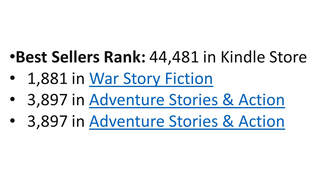 If the book’s overall sales ranking is better than 50,000 it is probably selling reasonably well. But also look at its rankings within its categories. If they are looking pretty good (better than 5,000), then that confirms your initial feelings. But are they the same categories that you have selected for your book? Because that is an important factor too. If they aren’t you can change your categories in KDP later, because if their book is selling well in those categories, yours have a good chance too if they are similar. Don’t bother with books that have a sales ranking worse than 500,000. They aren’t selling enough copies, which means that the keywords you used aren’t going to sell you many books because the results aren’t producing what the readers are looking for. Also don’t try to compete with the books that are at the top of the rankings. They are probably being written by well-known authors, which means you stand little chance of your book being selected as the one to buy. You are looking for the “mid-range” results that will sell you around 10 copies a day. If you get momentum from that you will climb the sales rankings naturally and you may end up competing with the bestselling authors that way, which is a happy place to be. 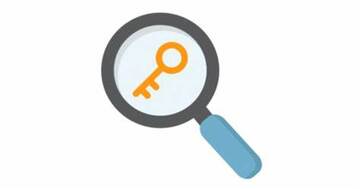 Repeat this process until you have 2 or 3 phrases that are producing the sorts of search results you were hoping for. Now go to KDP and enter those phrases into the keyword boxes, replacing any keywords that you feel probably aren’t working for you. If you use “Publisher Rocket” (we do) these will be easier to identify. Finally, the hardest part of all – be patient. If you have chosen the right keywords, sales will come, and they will be better than the sales you have had before. If you don’t have the success you expected after about a month, then repeat the process, generating new phrases to try. Don’t try to change all 7 keywords in one go. You won’t know which ones are working and which aren’t, and you may delete keywords that were selling you a few books before you tried this. If your sales are worse than they were before you started then not only are your new phrases not working for you, but you may have deleted useful keywords and you need to reinstate them.  Now, before we go on to talk about subtitles, just a word about the section of the metadata that asks you if the book contains “adult” content. Amazon isn’t too clear on what adult content is and what it isn’t. Accordingly, Bryan Cohen advises that you click on “no” for that question. If you write books that are erotic, contain a lot of extreme violence or lots of strong swear words, then maybe you should click the “yes” option. But otherwise, your books may end up in the adults only dungeon (Bryan’s words) and not be seen by a lot of potential readers. Ask yourself this: “Would I be happy with my 14 year old child reading this book?” If the answer is yes, then no harm will come from clicking the “no” button as children below that age tend not to buy books, their parents do the buying so let them make the decision. Now, subtitles.  We hadn’t thought about these too much in the past and hardly ever use them, but it turns out we should have. Using a subtitle allows you to have an 8th keyword phrase in your metadata that Amazon can find when people do searches. Naturally, as the subtitle appears on the book’s sales page it needs to be grammatically correct, but it can be used to provide guidance to the reader about the book’s content, which may not be apparent from the title. For example, one of our sci-fi titles is called “The Magi”. For some readers that could be interpreted (despite the cover showing an image of a spaceship) as being a book about the Three Wise Men who visited Jesus in Bethlehem. But by adding a subtitle that says “A sci-fi action adventure” we are describing the book in a way that can’t be misinterpreted. Subtitles like that can be used for any book written in any genre. Again, using trial and error, generate some potential subtitles and put them into Amazon’s search bar and see what results they produce. If they give you a list of books that use the same or similar subtitle, which the blurb tells you are the same sort of books that you write and which have reasonable sales rankings, then you are onto a winner. If your books have been organised into a series on KDP, as they should be if they are a series, then don’t use the series title in your subtitle. That will appear in search results if a reader uses the series title as a search term. The series title appears on the sales page anyway so you will be duplicating the wording and that looks amateurish. You don’t have to include your subtitle on your book cover. If you use KDP’s cover creator, it will pull the subtitle through from the metadata if there has been no previous cover created, but you can delete it from the cover if you want to. If you designed your own cover, you don’t have to change it to include the subtitle. Just a note about paperbacks (and hardbacks). Once these have been published you can’t go back later and add a subtitle. However, if a search throws up your ebook, then the other buying options will also be shown on the sales page so readers will see that there is a hard copy option if they want it.  I have tried to cram into less than 10 minutes of reading what Bryan took an hour to say in his webinar, but of course he went into a lot more detail. So, if you want to know more, I suggest you contact Bryan through his website. As well as selling training he also runs regular “author challenges” where he provides coaching for free, so you may care to sign up for one of those in order to expand on what we have discussed here. If you have enjoyed this blog, or found it informative, then make sure you don’t miss future editions. Just click on the button below to sign up for our newsletter. We’ll even send you a free ebook for doing so. 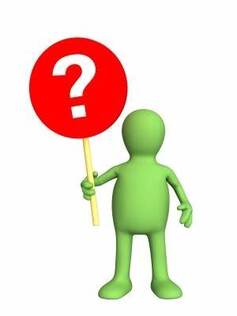 Why aren’t my books selling? It’s a question that we hear many authors asking, especially on Twitter (Good old Twitter – we’d be stuck for blog ideas without it it). Well, first some expectation management. There are a thousand reasons why a book might not be selling, so it is impossible to answer that question for any individual book in a simple blog. All we can do is look at some generalities and let you compare and contrast those with your book and your marketing to see what conclusions you can draw. But those generalities are important, as they may point you towards the single reason your book may not be selling. You will have to identify and address the precise issue, but at least you will be closer to the right answer than you would be if you hadn’t read this blog. 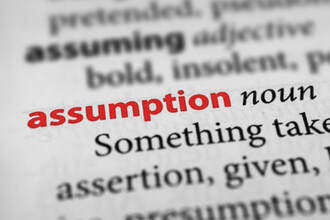 We are going to start with two assumptions. We will be discussing marketing later in the blog, but our starting point assumes that you have done some marketing, which has led to a potential reader finding their way to the Amazon page for your book. If you don’t sell through Amazon (Why not? They account for 80% of ebook sales!) then the same basic messages apply to other on-line book selling sites. The second assumption (and it is the big one) is that your book is actually up to the required quality. Your Beta readers will have told you that. Sadly, your family and friends probably won’t tell you if it wasn’t, because they don’t want to hurt your feelings. If you haven’t used Beta readers, or you haven’t acted on Beta reader feedback, you are entering a lottery and nothing we can say will change that. You may find it helpful to have your Amazon (or whatever) sales page open in another tab, so you can flip between it and this blog to see what we are talking about. So, what is the first thing a potential reader will see when they click on a link to take them to your book’s sales page? Cover image 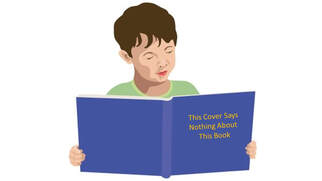 We blogged about cover design just a couple of weeks ago, so we aren’t going to go over that ground again. I think it is safe to say that if your book showed up in someone’s search results, they must have found the cover appealing enough to click on the link or they wouldn't be looking at the book's sales page. But what if they didn’t click on the link? If you have been running an advert for your book, you will have data from the results to tell you how many clicks you got (a 10% conversions rate is good). If you aren’t getting enough clicks, your cover design may be part of the problem. But if you haven’t run any ads, you won’t know. You may want to scroll down and read that blog about cover designs, just in case. 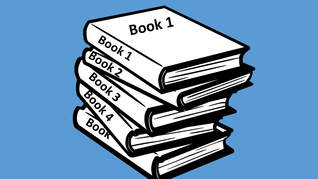 Title A lot has been written about titles, with many gurus suggesting titles should be short. All we can say is that “Dune” was a best seller and so was “The Curious Incident Of The Dog In The Nighttime”. You can draw your own conclusions with regard to the impact of title length on sales. We don’t think it is a critical factor unless you have used words that might alientate the reader. Price I’ve said it before, but I’ll say it again, if you aren’t J K Rowling, you can’t charge J K Rowling prices for your books. The ability to set their own price is one of the few competitive advantages that the Indie author has, so they need to use it. “I’m not going to under-sell my talent.” is an objection that is often raised when I say that.  OK, here are the facts. A mainstream published author only gets about 10% of the royalties from each sale. So, for a 9.99 ebook (forgive the lack of currency, it just saves me having to provide $, £ and other conversions), the author will only get about 1. But for a 5.99 ebook an Indie author will get between 1.75 and 3.50 (approx) depending on whether they took the 35% or the 70% royalty option. So, who is underselling their talent? The mainstream published author makes their money not from individual sales, but from total volume of sales. That is as much about having a big marketing budget as it is about having talent. Even some pretty bad writers (naming no names) can sell a lot of books if they have a big enough marketing budget behind them. You, on the other hand, aren’t making any sales, so no one knows about your talent and, if you insist on charging 9.99 for your books, they may never know about it. I’m actually surprised that more mainstream authors don’t opt for self-publishing once they have established their name – they would make far more money. Blurb 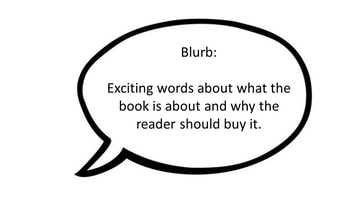 After price, this is the next crucial part of the sales page. If the reader is intrigued by the book’s blurb, they will either buy the book, or take the next step towards buying the book, which is to read the “Look Inside” portion. There are many blogs about blurb writing available, including some of our own and they all say pretty much the same thing. There are even books the subject (try Bryan Cohen’s). Google “How to write a good book blurb”, read what the blogs have to say and then make sure your own blurb is doing its job. If it isn’t, change it. “Look Inside” feature. If you have got the reader as far as looking inside the book, you are 90% of the way to making the sale. But it’s that final 10% that is the killer. If the “Look Inside” sample captures the reader’s interest, the sale is guaranteed. If it doesn’t then the reader will go and look somewhere else for their next book. 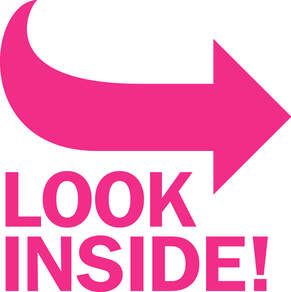 Once upon a time authors were permitted to take their time telling their story, using the opening chapters to create atmosphere and develop characters, before having to think about “inciting incidents”. Films, TV and computer games have changed all that. Nowadays you have to capture the reader’s interest within the opening few pages of the book and the “Look Inside” portion aids and abets that approach. If you fail to capture the reader’s interest, that 90% is all for nothing and you don’t make the sale. So, ask a few people, who you trust to give you an honest opinion, to read that “Look Inside” portion and then get them to tell you if they would buy the book if they didn’t know it was by you. It may still not provide a definitive answer, because they may not want to hurt your feelings, but if they are really good friends and really trustworthy, they will be honest. Reviews 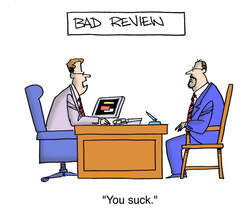 If the “Look Inside” portion of your book has done its job, readers may never look at the reviews it has been given. I almost never look at reviews myself, having made my decision based on the above factors. But some people do look at reviews, which is a problem if you don’t have any. You can pay for reviews. I’m not recommending it, but it’s your money. If you want to pay, that’s your call. But the real problem is bad reviews. There are two things to be done if you have a lot of bad reviews. A good reviewer will be helpful and provide reasons why they didn’t like your book, so learn from that. The first thing to look at, therefore, is what the reviewer said and then fix the problems. But that won’t get rid of the bad reviews, so there is a second thing you may need to consider. You may wish to “unpublish” the book from Amazon and re-launch it on another self-publishing site, such as D2D. The reviews on Amazon will no longer be seen and the book will start off on the new site with a clean slate. If you are already on multiple self-publishing sites, you really are stuck. Also, if you have bad reviews on Goodreads and other review sites, there is nothing that can be done about those. You may have to unpublish the book entirely and start anew by writing a brand new book. But use those reviews to learn from your mistakes, so the new book doesn’t suffer the same fate. An author who refuses to learn from their mistakes (or even admit they made any) will never sell books. Marketing 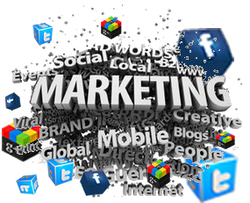 We said at the top of the blog that we would be discussing marketing, so here we are. However, this is too vast a subject to cover in one blog. We have written more blogs on this subject than on any other and we are still only scratching the surface in many aspects of the craft. The best thing we can advise is that you undertake some free training in marketing to help you market your books effectively. Effective marketing comes from knowledge, not luck. What we can do is summarise some of the key messages we have put out about this subject in the past. 1. No one is going to stumble on your book by accident. Marketing is not a choice – it is an essential. 2. Did you put the right “keywords” in into your book’s details on KDP? The most common way for people to find new authors on Amazon (or any site) is through searches using keywords. 3. Social media was a better marketing tool in the early days but is now largely past its “sell by” date. 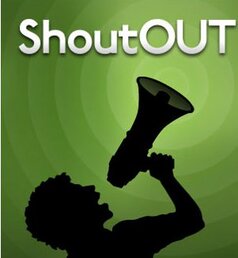 4. Blasting out Tweets to try to sell your book doesn’t work, so don’t pay people to do it. Social media users just scroll past those Tweets nowadays – or they block the username. 5. Social media is still a useful tool if you remember to use the "social" part correctly. 6. Paying for marketing services is an option – but only if you know which service is going to work for your book. You can’t cure a broken leg by taking an aspirin, so you have to know what is wrong with your marketing strategy before you pay someone to fix it, otherwise you risk trying to fix the wrong thing and throwing your money down the toilet.. 7. We’re sorry to have to be the bearers of bad news, but if you really want to sell books you are probably going to have to pay to advertise. We have found Amazon Ads and Facebook Ads to be the most cost effective. If you want to read any of those myriad blogs we have written on the subject of book marketing, you can find them in our archive. So, have you some inkling now about why your books aren’t selling? Maybe you haven’t found the final answer yet, but I hope we have shone a torch into the dark corners where you might find the final answer. If you have enjoyed this blog, or found it informative, then make sure you don’t miss future editions. Just click on the button below to sign up for our newsletter. We’ll even send you a free ebook for doing so.  Why do bookstore chains have big displays of book just inside their doors, showing the covers of the books that they are trying to sell that week? Firstly, the publishers are probably paying for the space that the display is taking up. But, more importantly, it is about the only place in a bookstore where it is possible to display the books so that the cover can be shown off. In the bookshelves themselves only the spines can be seen, with the odd book being turned “face outward” to show the front cover. Again, the publisher is probably paying to use that extra space.  There is an old saying amongst chefs that the first taste of a dish is with the eyes. Which is why chefs take so much care over the presentation of the food. It is sometimes a work of art in itself. "It LOOKS delicious." is something most of us have said in our time. And exactly the same rule applies to books. The first taste is with the eyes and the taster is the cover of the book. But instead of saying "It looks delicious" we say "It looks interesting". Cover design is something we have blogged about in the past, but we came across a book recently that reminded us of the importance of getting the cover right. Let me say up front that the book itself was excellent. It wasn’t published by us (more’s the pity), but we are happy to compliment the author on a job well done. One of our authors had been sent the book to review it, which is why he knew what it was about. We only became involved when the reviewer asked our opinion on the cover – which gave rise to this blog.  Just because a cover is artistic, it doesn't make it a good cover. Just because a cover is artistic, it doesn't make it a good cover. here was nothing wrong with the cover in artistic terms. The problem was that it didn’t say anything about the book. From the imagery it used, it wasn’t possible to know what genre the book was written in. The title didn’t tell us either. In a recent Tweet an author showed three potential covers for her latest book and asked followers which they preferred. I thought they all had a very dated, 1950s/60s, look about them and none of them excited my interest, despite the book being in a genre I read. I Tweeted back to say as much. She probably didn’t like the feedback, but better for the author to get it now than in several weeks’ time after the book has been published. The cover is the first thing a reader sees, regardless of whether it is a bookstore or on-line. The only place a cover isn’t required to make an impact is in a library, where all the books are displayed spine outwards, so only the title and the author’s name are visible.  "Don't judge a book by its spine." "Don't judge a book by its spine." The quote from George Eliot (1819-1880), “Don’t judge a book by its cover” is actually a misquote. What she actually said was “Don’t judge a book by its spine”. There are pretty obvious reasons why that version is true. But readers constantly judge books by their covers. It is why publishers spend so much money on cover designs. So, the cover and the title combined must tell the reader everything they need to know about genre, so the reader knows that it is the sort of book they like to read. If that is the case, they will then read the blurb, or the “look inside” portion, or both, and the reader is well on the way to buying the book. If that initial impact isn’t made, the reader will move on to the next book on the shelf, or they will scroll on by to the next book in the search results. 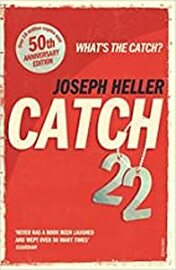 Joseph Heller's classic was already well known by the time this cover was used. Joseph Heller's classic was already well known by the time this cover was used. Authors choose their book titles for many reasons, and they don’t always say what genre the book is. From the title “Catch-22” you wouldn’t guess that the book was a satire on the way the United States Army Air Corp operated during World War II. It is more likely to suggest a book about baseball or cricket. The real genre only becomes apparent when you read the book. I’m sure that you can all think of other book titles that don’t suggest the genre of the book. Sometimes it is possible to guess because you know what sort of books are written by a particular author, but that isn’t a hard and fast rule either, because some authors write in multiple genres. But if it is an author’s first book, the reader has no idea what genre they write in. So, if the book’s title doesn’t suggest the genre and the author’s name isn’t familiar, then the book’s cover has to do a lot of work for the author if they want to capture the attention of a reader.  A lack of distinguishing features A lack of distinguishing features We went looking for other titles by the same author and, by accident, came across another problem. The book was the second in a series but the cover of the first book was so similar to that of the second that it is bound to create confusion for the reader. Our memories work far better with visual images than they do with text – and that is where the problem lay. With the exception of some minor differences in background colour, the cover of the second book was identical to the cover of the first book. The only major indication that the two books were different were the titles. Given what I have said about visual imagery taking precedence over text, readers are likely to recognise the cover image from the first book and think they have read the second book when they haven’t. If they have enjoyed the first book and would be prepared to buy the second book without knowing anything else about it, they might not buy for that reason. That’s a guaranteed sale that has been lost, because the cover caused confusion.  We can guess that the author was trying to establish a “brand identity” for the series and there is nothing wrong with that. Most authors (or publishers) of book series try to establish a brand identity for them. But readers must be able to identify individual books in a series at first glance, while also recognising the branding. The way the author (or their publisher) had done it in this case it wasn’t really possible to see that the two books were different. If a reader is asking themselves “Have I read this book before?” then they aren’t going to buy the book if they are in any doubt. They may not decide to read the book’s blurb to find out if they have read it, they may simply move on along the bookshelf or scroll through the search results and that is a lost sale. The above image of three covers from novels in Bernard Cornwell’s “Sharpe” series shows how a brand identity can be achieved, through a combination of layout, font selection and visual imagery.
I could go on about selecting the right fonts to suit the genre (the Sharpe covers provide a good example), but those sorts of refinements are secondary to the visual impact of the cover art. So, the two things we hope you will take away from this blog, if you are self-publishing your book: 1. Make sure your book cover makes it clear what genre the book is written in. 2. Make sure the reader can distinguish between successive books in a series. And if you are fortunate enough to have a publisher, make sure your publisher has addressed those two issues to your satisfaction before you sign off on the cover design. If in doubt, take some time to search through the listings of books, especially best-sellers, written in the same genre as yours to see what other authors/publishers have done with the covers. There is no shame in imitation (only in in direct copying). If you have enjoyed this blog, or found it informative, then make sure you don’t miss future editions. Just click on the button below to sign up for our newsletter. We’ll even send you a free ebook for doing so. 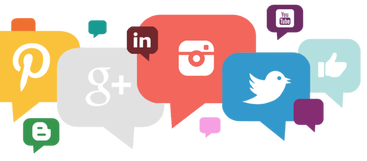 Once again I owe the inspiration for this blog to social media, which is ironic because it relates to the effectiveness of social media as a marketing tool. In this case, I read a Tweet from an author listing all the social media channels to which he subscribed, plus his blog, and bemoaning the fact that they weren’t generating much in the way of sales. I took a quick look at his Twitter feed and spotted at once what the problem was: a lack of engagement.  No, not that sort of engagement! No, not that sort of engagement! He had made a few re-tweets and posted a few “fake engagement” type posts (I’ll be returning to that shortly), but there was nothing on his feed that would encourage me, as a reader, to check out his work. So, it was unsurprising that despite all the channels he was trying to use, he was getting little return. Many authors see social media as a way of plugging their books and no more. That is where they go wrong. Yes, you may generate a few sales by metaphorically saying “Buy my book”, but it is just as likely that readers will scroll past and read a Tweet that isn’t trying to sell them something. 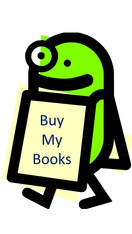 Even if they are interested in the book, they have to click away from the social media channel to check it out, and that interrupts their social media experience, so the best that can be hoped for is that they check it out later. That rarely happens because, by that time, the post has been lost amongst the thousands of others that have since appeared on the timeline. But if social media is so poor when it comes to selling books, why do so many social media gurus still champion it? Because social media is a useful tool – but you have to use it the right way. All tools have to be used correctly if they are to provide you with the right results and social media is no different in that respect. 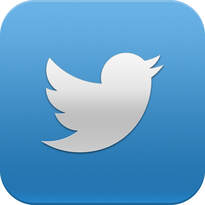 I’ll be using Twitter as my demonstration model, but the same problems apply with most social media channels. So, what do people do wrong? The most common mistake is “fake engagement”. This produces them lots of nice engagement data but doesn’t produce the desired results. In other words, it looks like it is working if you check the number of responses that a post got, but it doesn’t actually sell any books. So, what is “fake engagement”? Well, let’s start with what I mean by engagement. Engagement is supposed to be a conversation, which builds up a relationship, which then leads on to curiosity about the author’s work. 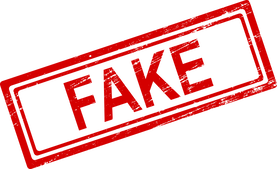 If the approach used generates responses but without that conversation emerging, then it is fake engagement, because it is one sided. It comes in many forms, but these are the most common: “Can anyone see my Tweets?” There are variations on that question, but the basic idea is that the viewer responds with a “yes, I can” answer, which appears in the Twitter analytics as engagement. But it is one sided engagement as no conversation emerges from it.  The “Writer’s boost” or “author boost”. This is the one I hate the most, because it uses the desperation of other authors to create the fake engagement. I don’t know of any author who has ever made a sale through responding to that sort of invitation (please comment below if you have). It comes in many forms, including posting links to books or blogs or posting cover images. A variation is asking authors to post the first line of their book or from a chapter, or to say something about a character. The inference is that the curiosity of readers will be excited and they will want to know more, but as the post is appealing to authors, not readers, there is little likelihood of that happening. (yes, I know authors are readers too, but in this instance they are responding as authors, not looking for their next new read). These types of post generate a lot of responses from authors, often several hundred but, again, it doesn’t create actual engagement. There are variations on this approach, such as asking people to recommend books. It usually starts with the poster suggesting they suddenly have some spare cash to spend and they want to spend it on books. 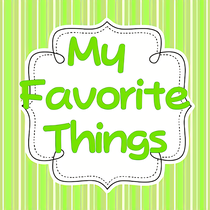 “Who/what is your favourite ….?” There is a natural impulse to respond to those sorts of Tweets, but I would advise against it. In its most harmless form, answering the question is just another form of fake engagement. However, it can also be a form of data gathering. Don’t be surprised if you see a sudden surge in advertising on your timeline related to products associated (however tangentially) with your answer. Some dialogues do emerge from those sorts of questions, but they tend to be between other responders, not with the person who asked the question in the first place. That data also appears in their engagement statistics. The questions take many forms. Another variation is “What goes on first, the peanut butter or the jelly?”, or “What goes with peanut butter (you can’t say jelly)?” The British version of that is “Jam or cream?” (Brits will know what that is about) but it’s still fake.  “I’m having a bad day.” Yes, I know that there are sometimes people on social media who are genuinely having a bad day. But that only makes this sort of fake engagement worse, because it is the very worst form of manipulation. They may look like they are saying “Feel sorry for me; sympathise with me; send me pictures of kittens or puppies”, but all of these are fake engagement. It boosts their engagement numbers and makes their feed look popular, but they don’t actually engage with anyone. And without that engagement, they will never sell any books. And they certainly won’t buy any of your books if you respond. 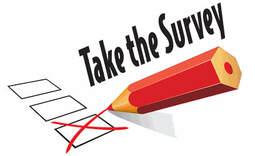 Surveys If you want to boost your engagement stats, post a survey. People love them. But they aren’t real engagement. I could keep adding to this list, but I’m sure you get the idea by now that fake engagement is about getting people to respond to a post, not about actually taking an interest in anything the responders have to say. So, what is real engagement and how do you use it to sell books?  Find the real readers. Find the real readers. First of all, you have to search out and engage with readers, not with other authors. If you are an author, you are trying to attract new readers. That means talking to readers about books.. If you are a sci-fi author, you need to talk to sci-fi readers. If you are a romance author, you need to talk to romance readers, etc etc. How does that sell books? It doesn’t. At least, not directly. Social media isn’t a “direct” sales channel. You can’t draw a line between a post and a purchase. 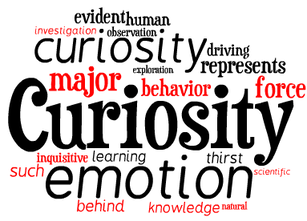 Social media has to be used to excite people’s curiosity about you and the way you do that is the same as you would in real life. You don’t walk up to someone in the street and say “buy my book”. So why would you think you can do that on Twitter, or Facebook, or Instagram? No, you engage people in conversation and the best form of conversation to engage them in is the thing they like to talk about the most – themselves. And, eventually, they feel obliged to ask “what about you?” At that point it is OK to mention your book – because they asked.  BTW, this is where a pinned post about your book is essential. Because they may not ask about you or your book, but they may go and take a closer look at your feed and that’s where they will see the post about your book, if you have pinned it. You still may not make a sale, but you may at least have captured their interest enough to take a look at your book. It is very much a “soft sell” approach, but it is more likely to be successful on social media than a hard sell. How do you identify readers?  It isn’t easy, unless they have it in their biography or they mention it in their posts, but if you assume that everyone is a reader, then you won’t go far wrong. The worst that can happen is that you use social media for what it is meant to be used – for being sociable. Does that all sound like hard work? OK, who told you that it would be easy? Because if anyone did, they lied to you. As I have said in many previous blogs, there is nothing easy about marketing, and that includes social media marketing. Using social media as a tool to promote your work is hard and requires a lot of time and effort. But, done right, it can be effective. Done wrong and it gets you nothing, as the person who inspired this blog found out. If you have enjoyed this blog, or found it informative, then make sure you don’t miss future editions. Just click on the button below to sign up for our newsletter. We’ll even send you a free ebook for doing so.  In last week’s blog we focused on some of the positives of being an Indie author, so it is only fair that we now look at some of the negatives. But we here at Selfishgenie are positive sorts of people, so we really want to turn the negatives into positives too. It isn’t always possible, but we have racked our brains and we think we have found a few ways of doing that. We’re not going to go all “turn that frown upside down” cliché on you. But we do want you to know that there is nothing about the negatives of being an Indie author that you should ever feel you can’t do something about. So, here we go with the negatives of being an Indie author.  1. You have to edit your own work. Some people love editing, some people hate it. But it is an essential part of being an author. If you want your book to be the best version of itself that it can be, you are going to have to do some editing, because the first draft of any novel is never going to be perfect. The first step to editing your draft is to put it out to beta readers. Many Indie authors think this is the final step because they want approval for their finished product. It must therefore be quite demoralising when their beta readers tell them that the book still needs work. So, go to the beta readers first, get their feedback, fix what needs fixing, then go back to a different set of beta readers for a fresh perspective. The feedback should be less damning and more complimentary, but you can still expect some suggestions for improvement. Rinse and repeat until the beta readers have no more suggestions for improvement, or until you think the suggestions are no more than nit-picking. There is no point in putting a book out there and hoping it is good enough. This process provides a degree of certainty. If all else fails, you can find editors on-line and pay them to edit your book. Be very sure of what you are paying for, however. Particularly make sure you understand the difference between editing the text and editing the narrative.  2. You have to do your own formatting. True, but if you set up a template so that from the first word of your book it is already formatted correctly, you will save yourself a lot of time. You may want two formats, a draft version that’s double spaced for later editing, and a final version, but word processing packages allow for speedy conversion from one to the other. We encourage authors to compose in the final format, because we edit using word processors too, which means double spacing isn’t required. We even publish a formatting guide so that potential authors can impress us by showing that they have researched us and know what we are looking for from them. There really is no witchcraft to formatting:
These aren’t hard and fast rules but take a look at the books you love the most and see how they are formatted. Copy them and you won’t go far wrong. 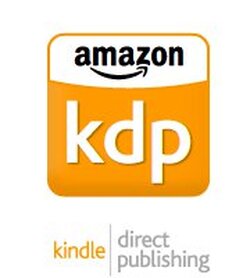 3. You have to upload your books onto self-publishing sites yourself. This can be time consuming the first time you have to do it, but after that you can upload an ebook and a paperback in less than an hour. Some sites are more difficult to work with than others, but if you do anything they don’t like they will tell you why, so you can correct it before publication. If you get the formatting right in the first place, the problems will be reduced. Covers are most tricky, especially for paperbacks, because they have to take into account the thickness of the book when it has been printed. Investing in a package such as Book Brush and learning how to use it is well worth the money and the time. 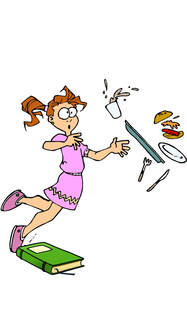 4. You have to market the book yourself. There can be no doubt that this is the hardest part of self-publishing, and it is also the part that Indie authors spend the least time and money on. Sorry, but if you think people are going to stumble across your book by accident, you are fooling yourself. If you think that “word of mouth” will sell your book, you are fooling yourself. If you think that plugging your book on social media will sell your book, you are fooling yourself. Yes, both word of mouth and social media have a part to play in book marketing, but it isn’t as big a part as some people make out. Book marketing requires knowledge of how to do it if it is going to work. Unless you want to spend money getting other people to do it, it is far better to spend money on learning to do it for yourself. Actually, you don’t have to spend money on learning. There are free on-line courses on marketing that will teach you the basics. But you have to invest the time and the effort if you want it to work. Investment in yourself is an investment that always pays back – so do it. But at some point you will have to pay for marketing services, especially advertising. We have posted several blogs on this subject and you can find them all in our archive. But the golden rule is caveat emptor – buyer beware. There are lots of “businesses” out there that promise a lot but deliver little. Look for recommendations from other authors and check their sales rankings - because they don't lie. That’s one of the best ways you can use social media when it comes to marketing.  5. Readers don’t take self-published authors seriously. Unfortunately, there is little we can do about that sort of prejudice. Also unfortunately, there are a lot of poorly written self-published books that would seem to confirm this bias (though not yours, obvs). There are a couple of things you can do to try to change the minds of readers when you encounter this bias. The first thing to do is to challenge this view. There are a limited number of agents and an even more limited number of publishers, so author supply outstrips publisher demand. Just because an author can’t find a publisher it doesn’t mean their book isn’t worthy. It just means there is no space for them at the table right now. The other thing you can do is to point out the growing list of bestselling self-published authors. We gave some names in last week’s blog, so you can scroll down and see them. Saying something like “How do you account for the success of L J Ross, who is self-published and has sold over 7 million books?” will leave the prejudiced person looking for a way out of the conversation. If they reply with “they got lucky” then start reeling off a few more names and asking if they all “got lucky”. Or maybe they sell so many books because they are real authors who tell stories that people want to read. I can’t promise that you will change a lot of minds, but it is only by challenging prejudices that we eventually eradicate them. If all else fails, offer them a free copy of your book so they judge you on merit instead of pre-judging you. 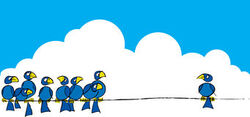 6. You feel so isolated and/or you feel like an imposter. Having a publisher comes with a support network that affirms your ability as a writer. And there is always someone available at the end of a telephone who understands what you are going through and is there with words or comfort. But just because you are self-published, it doesn’t mean you are alone. Join a writer’s group. Even if you live in an isolated community you can join virtually. Zoom has become a great boon when it comes to meeting other writers and discussing your problems with them – and being there for them to discuss their problems with you. Join on-line writers forums, for the same reason – but don’t try to use them to plug your books! I don’t recommend social media as your first port of call for support. While the vast majority of authors on it are supportive, it only needs one troll to start on you and it can ruin your day. Find the safe spaces and stick to them. But always remember – you are not alone. If the worst comes to the worst, you can always email us, even if you aren’t one of our authors. We support every Indie author, regardless. See our “contact” page for our email address. If you have enjoyed this blog, or found it informative, then make sure you don’t miss future editions. Just click on the button below to sign up for our newsletter. We’ll even send you a free ebook for doing so. |
AuthorThis blog is compiled and curated by the Selfishgenie publishing team. Archives
June 2025
|
||||||
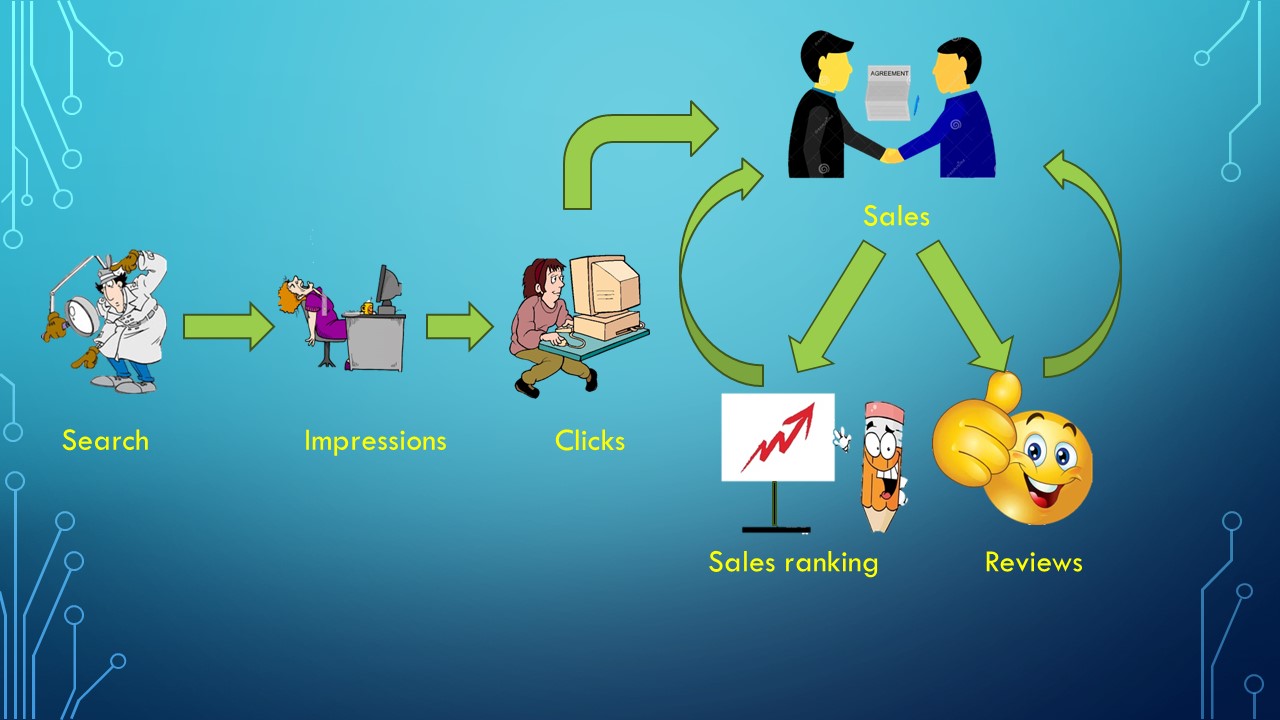

 RSS Feed
RSS Feed